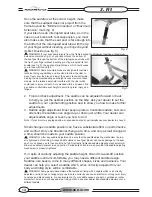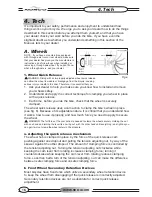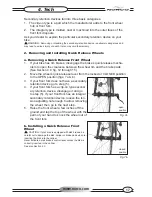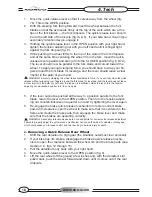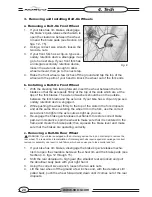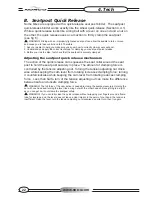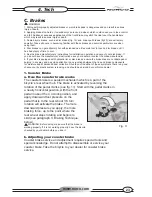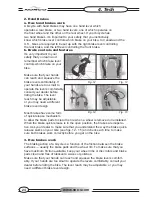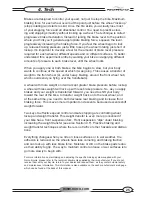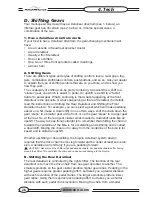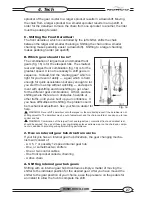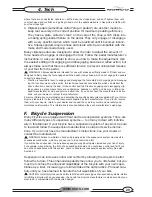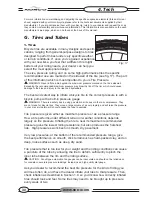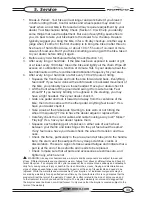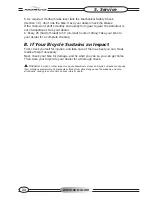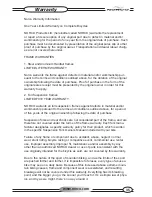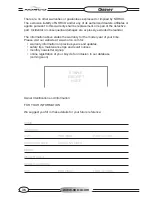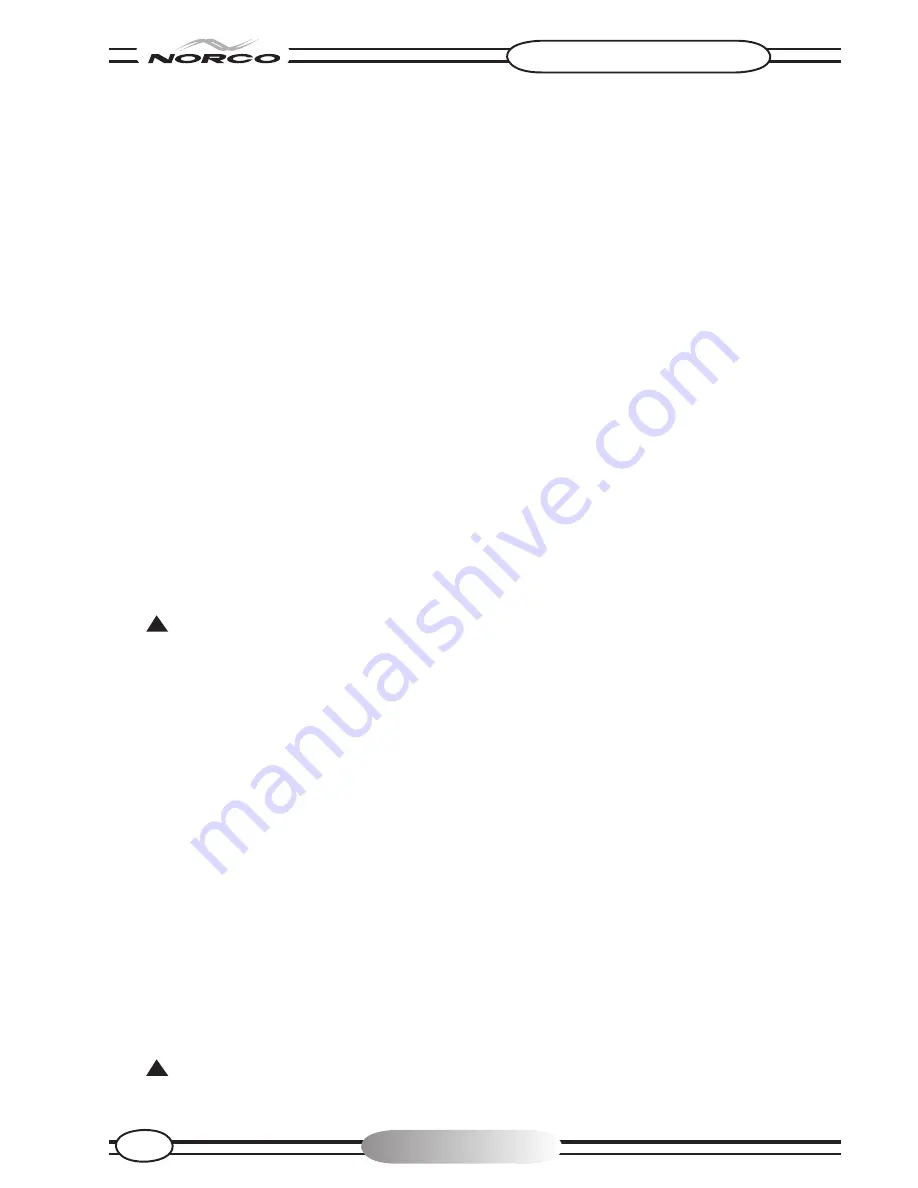
www.norco.com
28
B. Which gear should I be in?
The numerically lowest gear (1) is for the steepest hills. The numerically largest
gear (3, 5, 7 or 12, depending on the number of speeds of your hub) is for the
greatest speed.
Shifting from an easier, “slower” gear (like 1) to a harder, “faster” gear (like 2 or
3) is called an upshift. Shifting from a harder, “faster” gear to an easier, “slower”
gear is called a downshift. It is not necessary to shift gears in sequence. Instead,
find the “starting gear” for the conditions - a gear which is hard enough for quick
acceleration but easy enough to let you start from a stop without wobbling - and
experiment with upshifting and downshifting to get a feel for the different gears.
At first, practice shifting where there are no obstacles, hazards or other traffic,
until you’ve built up your confidence. If you have difficulties with shifting, the
problem could be mechanical adjustment. See your Norco dealer for help.
For more information on maintaining and adjusting the specific shifting system supplied with your Norco
bicycle, please refer to the technical documents supplied by their manufacturer. If you did not receive
them with your bicycle, return to your dealer and request them, as they contain crucial safety and main-
tenance information. This information is also available on the each manufacturer’s web page.
E. Pedals
1. Toe Overlap is when your toe can touch the front wheel when you turn the
handlebars to steer while a pedal is in the forward-most position. This is
common on small-framed bicycles, and is avoided by keeping the inside
pedal up and the outside pedal down when turning. This technique will also
prevent the inside pedal from striking the ground in a turn.
WARNING: Toe Overlap could cause you to lose control and fall. Ask your dealer to help you deter-
mine if the combination of frame size, crank arm lenght, pedal design and shoes you will use results in
pedal overlap. If you have toe overlap, you must keep the inside pedal down and the outside pedal up
when making sharp turns.
2. Some bicycles come equipped with pedals that have sharp and potentially
dangerous surfaces. These surfaces are designed to add safety by increas-
ing grip between the rider’s shoe and the pedal. If your bicycle has this type
of high-performance pedal, you must take extra care to avoid serious injury
from the pedals’ sharp surfaces. Based on your riding style or skill level, you
may prefer a less aggressive pedal design, or choose to ride with shin pads.
Your dealer can show you a number of options and make suitable recom-
mendations.
3. Toeclips and straps are a means keep feet correctly positioned and engaged
with the pedals. The toeclip positions the ball of the foot over the pedal spin-
dle, which gives maximum pedaling power. The toe strap, when tightened,
keeps the foot engaged throughout the rotation cycle of the pedal. While
toeclips and straps give some benefit with any kind of shoe, they work most
effectively with cycling shoes designed for use with toeclips. Your dealer
can explain how toeclips and straps work. Shoes with deep threaded soles
or welts which might allow the foot to be trapped should not be used with
toeclips and straps.
WARNING: Getting into and out of pedals with toeclips and straps requires skill which can only be
acquired with practice. Until it becomes a reflex action, the technique requires concentration which can
distract the rider’s attention, causing you to lose control and fall. Practice the use of toeclips and straps
4. Tech
Summary of Contents for multi-speed bicycles
Page 1: ...for multi speed bicycles 7th Edition www norco com ...
Page 2: ......

